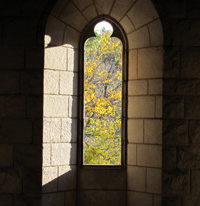Daily Office: Vespers
Inoculation
Tuesday, 15 February 2011
Scientists have discovered that low-grade bullying among social rivals is far more common in high schools than the thuggish kind. The battle for popularity may not break bones, but it becomes more unpleasant as contestants approach the top of the tree — only to disappear, according to Tara Parker-Pope, among the top two percentiles.
“At the very top you start to see a reversal — the kids in the top 2 percent are less likely to be aggressive,†Dr. Faris said. “The interpretation I favor is that they no longer need to be aggressive because they’re at the top, and further aggression could be counterproductive, signaling insecurity with their social position.
“It’s possible that they’re incredibly friendly and everybody loves them and they were never mean, but I’m not so convinced by that, because there are so many kids right behind them in the hierarchy who are highly aggressive.â€
Over all, the research shows that about a third of students are involved in aggressive behavior. In another paper presented last year, Dr. Faris reported that most teenage aggression is directed at social rivals — “maybe one rung ahead of you or right beneath you,†as he put it, “rather than the kid who is completely unprotected and isolated.â€
It occurs to us that social bullying is a kind of vaccine that renders inoculated adolescents immune to the worst ravages of adult envy and jealousy. There might be something good to say about high school, after all.

